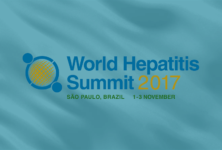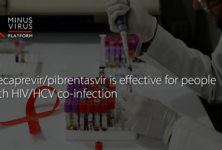Investigators claim VMMC scale-up plus 90-90-90 could end HIV, not just AIDS
Scale-up of voluntary medical male circumcision (VMMC) in countries with a high HIV prevalence has the potential to reduce incidence of new infections over and above the level associated with attainment of the 90-90-90 treatment target, according to a modelling study published in PLOS One.
The model was based on rollout of VMMC to cover 90% of males aged 15-49 years. The investigators modelled three viral suppression scenarios, two of which involved viral suppression rates below the 90% target. In all three scenarios, male circumcision would reduce HIV incidence to at least levels predicted with 90% viral suppression, even when suppression rates were as low as 75%. Although VMMC scale-up would initially increase costs, it was projected to reduce expenditure in the longer term.
“Compared to the epidemic impact of scaling up ART [antiretroviral therapy] to 90-90-90 levels, three scenarios that also include VMMC scale-up demonstrated additional reductions in HIV incidence and lower long-term program costs in models applied to Lesotho, Malawi, South Africa and Uganda,” write the investigators. “In the three scenarios modeled, for all four countries initial five-year annual program costs are higher with the combined ART and VMMC approach versus ART only, and then after 2020 are lower with the combined approach versus ART-only.”
The UNAIDS 90-90-90 target calls for 90% of people living with HIV being aware of their infection status; 90% of diagnosed people on ART; and 90% of people on ART with viral suppression. This would translate to 73% of all people with HIV having viral suppression. Achievement of these targets by 2020 would mean substantial reductions in HIV incidence and mortality and have the potential to end the AIDS epidemic by 2030.
Progress towards these targets in resource-limited settings has been mixed. Currently, only 51% of HIV-positive individuals in sub-Saharan Africa are aware of their status, approximately 43% are in receipt of ART and only a third have viral suppression. However, 84% of people who know their status are on ART and three-quarters of these people are virally suppressed. The biggest gap is therefore individual knowledge of HIV status.
VMMC can reduce the risk of infection with HIV by between 60 and 74%. As part of a wider prevention package, UNAIDS has set the target of circumcising 80% of young males in high prevalence settings by 2020.
An international team of investigators wanted to see how scale-up of VMMC in four high prevalence countries – Lesotho, Malawi, South Africa and Uganda – could contribute to 90-90-90 targets. They therefore modelled three scenarios:
- achievement of 90-90-90 targets
- a viral suppression rate of 75% rather than 90%
- achievement of the 90-90-90 target in women but lower coverage in men.
The authors also calculated the additional costs associated with scaling up VMMC (between $90 and $150 per procedure) in both the scale-up phase (to 2020) and in the longer term (to 2049).
Achievement of a 90% VMMC target within five years and then maintaining this coverage was projected to achieve reductions in HIV incidence over that seen with 90-90-90 alone. By 2050, annual HIV incidence would be reduced to between 0.05 and 0.5%. In all four countries, this was modestly below the levels seen with 90-90-90 alone. This was the case regardless of baseline HIV incidence levels (1.52% to 0.25%) or baseline coverage of adult male circumcision (39% to 14%).
Scaling up VMMC in the context of a 75% viral suppression rate was shown to achieve reductions in HIV incidence on a par with those associated with full achievement of the 90-90-90 target. This was also the case when the full 90-90-90 target was achieved in women but with lower coverage in men.
Adding VMMC increased programme costs through the rollout phase compared to 90-90-90 alone. But by 2025, adding VMMC was associated with savings compared to 90-90-90 without expansion of male circumcision programmes.
“Treatment affords reduced morbidity, mortality, and viral transmissibility in both men and women and must be taken early and consistently and clinically monitored for a lifetime to effect maximum benefit,” comment the authors. “Male circumcision conveys almost immediate substantial risk reduction to men for life after a single treatment.”
They conclude, “in the context of 90-90-90, prioritizing continued successful scale-up of VMMC increases the possibility of future generations not only free of AIDS but also HIV.”
By Michael Carter
Reference
Kripke K et al. Impact and cost of scaling up voluntary medical male circumcision for HIV prevention in the context of the new 90-90-90 HIV treatment targets. PLOS One. DOI: 10.1371/journal.pone.0155734 (2016).


 ПОИСК ПО САЙТУ
ПОИСК ПО САЙТУ  поиск по ресурсному центру
поиск по ресурсному центру 



